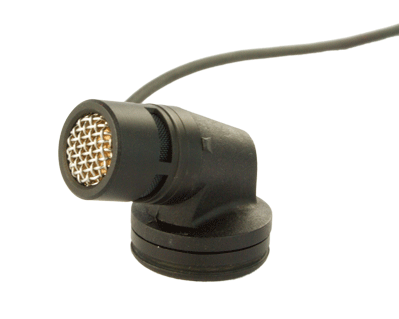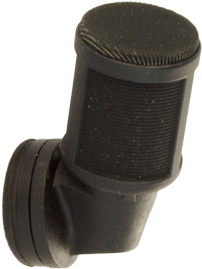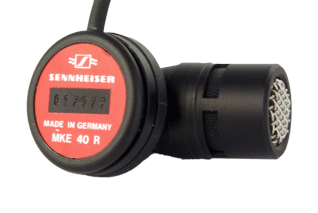|
This month, a very small microphone, but a true classic. This little giant has been in use in the studio for over 30 years with many European broadcasters; almost no news program, or talkshow can do without the crystal clear sound of these small electret (pre-polarized condenser) microphones, although the MKE 40 is rarely used outside Europe.
At the request of the West Deutsche Rundfunk (WDR-West German Radio), in 1981, Sennheiser brings out the MKE 40 R; the first lavalier *) microphone with a cardioid polar pattern. All previously manufactured lavalier microphones were omni-directional and therefore picked up much noise from their environment, which did not particularly benefit intelligibility. The MKE 40, with a length of 25 mm is not the smallest of models **), the casing is made practically immune to noise caused by the clothing on which it is worn, and the round base contains a magnet, for easy attachment (onto a small metal plate). Because the microphones are directional, they are much easier to use in studio situations where the sound needs to be amplified for speakers and audience. Other firms remained stubbornly producing just omnidirectional types; theoretically superior, but live barely usable. Not before around 2005 other manufacturers came up with cardioid miniature models, which are since than gratefully used by sound engineers.
All of these types of microphones are nowadays only used in combination with wireless transmitters. In 1978 the Sennheiser SK 1010 had come on the market; a transmitter for hand-, or lavalier use, with a choice of microphone capsules, or to which even an electric guitar could be connected and, since 1981, the MKE 40.
In 1979 the SK 1012 HiDyn came with vastly improved noise reduction, then in 1981 the SK 2012; an ultra-thin pocket-sized transmitter which made Sennheiser conquer the World. Even in the current range of broadcast microphones the MKE 40 is still sold, to both professionals and semi-amateurs.
*) Lavalier microphones derive their name from the French word meaning neck adornment (jewelry).
**) A short time later, the omni MKE 2 was presented, for occasions where other lavaliers were too large to be worn inconspicuously. There was also a wired version of the MKE 40, with a long handle; the MKE 42.
|
|


 Video's
Video's Contact
Contact



